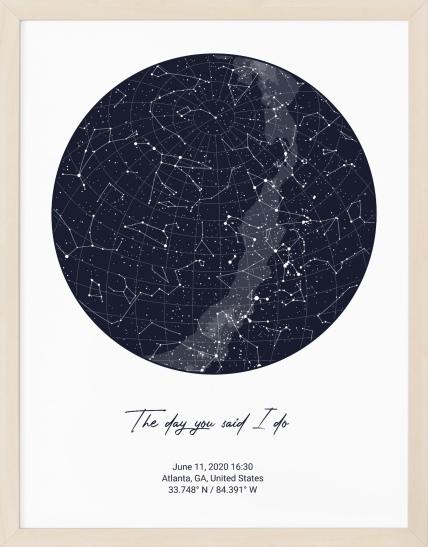The Moon has captivated humankind for centuries. Its ever-changing shape, gentle glow, and influence on our planet have inspired myths, religious practices, and a wide array of symbolic interpretations.
Below, discover the deeper meanings behind the Moon’s phases, its connection to the divine feminine, and its role in astrology and matters of the heart.
The Cyclical Nature of the Moon
One of the most striking aspects of the Moon is its constant transformation. Every lunar cycle—approximately 29.5 days—the Moon shifts from darkness to fullness and back again. This ongoing dance of light and shadow is often seen as a mirror of life’s many stages: times of growth and creativity, moments of rest and introspection, and eventual renewal.
Many cultures have viewed these phases as symbolic markers. Just as the Moon waxes and wanes, so do our lives ebb and flow. Understanding these natural rhythms can help us align with our own life cycles, making it easier to recognize when it’s time to start anew, work diligently, or let go of what no longer serves us.
Moon Phases and Their Symbolic Meanings
While each phase of the Moon flows seamlessly into the next, each one carries its own unique symbolism. Below is a snapshot of the main Moon phases and the energy they are often said to represent:
- New Moon – Fresh Starts
When the Moon is positioned between the Earth and the Sun, its illuminated side faces away from us, making it essentially invisible in the night sky. This phase is linked to new beginnings, intention-setting, and planting seeds—whether literal or metaphorical. - Waxing Crescent – Forward Momentum
A sliver of the Moon becomes visible, growing brighter each night. This is the time to take the first steps toward goals or to refine new ideas. Momentum builds, encouraging you to act on the intentions set during the New Moon. - First Quarter – Decision & Action
About half of the Moon’s face shines in the sky. Symbolically, this phase represents overcoming initial hurdles. It’s a moment of decision, prompting you to push through doubts or obstacles and commit fully to your path. - Waxing Gibbous – Refinement & Adjustment
More than half of the Moon is lit, nearing fullness. This phase invites you to evaluate your progress and make necessary tweaks. It’s a time to stay focused, continuously refining plans or strategies for optimal results. - Full Moon – Fulfillment & Release
At the peak of its cycle, the Moon reveals its entire luminous face. Often associated with culmination, manifestation, and heightened energy, the Full Moon is an excellent period for celebrating achievements and letting go of anything that has run its course. - Waning Gibbous – Gratitude & Reflection
After the Full Moon, the lit portion gradually decreases. This stage is perfect for reflecting on what has been accomplished. It encourages gratitude, helping you process lessons learned before moving forward. - Last Quarter – Evaluation & Letting Go
Half of the Moon is illuminated once again, though the opposite side from the First Quarter. Here, the energy focuses on release and forgiveness. It’s a moment to tie up loose ends, resolve lingering issues, and prepare for a fresh cycle. - Waning Crescent – Rest & Renewal
The Moon’s illuminated portion shrinks into a thin crescent. This phase is deeply introspective, urging rest, calm, and the final purging of anything that no longer aligns with your future intentions.
The Moon in Spiritual Traditions
The Divine Feminine
Across numerous cultures, the Moon is closely tied to feminine energy. Where the Sun is often seen as a symbol of unwavering, active light, the Moon provides a softer, reflective glow. This gentle luminosity is frequently associated with:
- Intuition and Emotional Wisdom: The Moon’s pull on our emotions can mirror its gravitational influence on the tides. In many spiritual paths, it signifies the intuitive powers often linked to the feminine spirit.
- Protection and Fertility: Goddesses connected to the Moon are often guardians of childbirth and fertility. They offer guidance and safeguarding during significant life transitions.
Illumination and Inner Insight
Unlike the Sun’s direct radiance, the Moon’s light is reflected, representing knowledge that emerges from within or that is revealed indirectly. This introspective illumination often symbolizes subconscious truths. In spiritual practices, Moon rituals can be used to explore dreams, hidden desires, or aspects of our personality we have yet to understand. By working with the Moon’s subtle energy, we learn to harness intuition and embrace the gentle revelations it brings.
The Moon in Astrology
In Western astrology, the Moon is traditionally connected to the zodiac sign of Cancer. This water sign is known for its emotional depth, empathy, and nurturing qualities. Those born under Cancer (typically between June 21 and July 22) may feel especially attuned to the Moon’s energy. However, everyone has a Moon sign in their personal birth chart, indicating how they process emotions, seek comfort, and deal with intuition.
Moon & Water Elements
Because of Cancer’s water element, the Moon is often linked to oceans, tides, and other bodies of water. On a physical level, the gravitational pull of the Moon significantly influences Earth’s tides. Symbolically, this underscores the profound way lunar phases can stir inner emotional waters, guiding us to reflect, adapt, and flow.
Love and the Lunar Mystique
Romance under moonlight is a timeless theme, as lovers have long been drawn to the Moon’s enchantment. But the Moon’s link to love runs deeper than atmospheric imagery:
- Unity in Contrast: The Moon frequently appears alongside the Sun or stars, each shining in its own way but harmoniously sharing the sky. Similarly, in relationships, two distinct individuals can unite, supporting each other’s growth and illuminating life’s path together.
- Cycles of Commitment: Just as the Moon goes through stages, relationships also experience periods of closeness, revelation, challenge, and renewal. Acknowledging these cycles can foster healthier bonds and mutual understanding.
Celebrating the Moon’s Significance
From stunning Moon Phase Posters to personalized designs that capture the beauty of the lunar cycle, many people choose to honor the Moon’s influence in their lives. Whether you seek a spiritual connection, astrological insights, or a romantic gesture, a Moon-inspired poster can bring a sense of wonder and harmony to your home.
Create your own personalized Moon Phase Poster
Conclusion
The Moon is far more than a celestial body glowing in the night sky. It mirrors our own journeys of change, renewal, and discovery, guiding us through subtle shifts in consciousness.
Whether you connect with its phases for spiritual reasons, look to it for emotional support, or simply admire its luminescent beauty, the Moon remains an enduring symbol of life’s constant cycles and the promise of fresh beginnings.
FAQ:
1. Does the Moon really affect human behavior?
While the direct influence of the Moon on emotions is debated scientifically, many people note feeling more energetic or introspective during certain phases. Historically and culturally, the Full Moon has long been associated with heightened moods, but personal experience may vary.
2. How can I find my Moon sign in astrology?
You can calculate your Moon sign using an online birth chart tool or by consulting an astrologer. You’ll need your exact time, date, and place of birth to determine which zodiac sign the Moon was transiting at that specific moment.
3. What are some simple Moon rituals to try?
Popular lunar rituals include setting intentions during the New Moon, journaling or meditating under the Full Moon, and creating lists of items or habits you wish to release as the Moon wanes. These practices can be adapted to fit your personal beliefs.
4. Why is the Moon often seen as feminine?
Many traditions associate the Moon with nurturing, intuition, and the cyclical nature of fertility. Lunar deities frequently represent motherhood or protective roles, reinforcing the link to feminine energy and the concept of rebirth.
5. Can I harness Full Moon energy for manifestation?
Yes. Many people believe the Full Moon amplifies energy, making it an ideal time to focus on goals and visualize outcomes. You could create a vision board, practice guided meditations, or partake in group ceremonies that celebrate the power of lunar illumination.
6. Is it important to follow the entire lunar cycle for spiritual work?
While not mandatory, following the lunar cycle can help you establish a consistent rhythm. Each phase invites a different focus—planning, acting, celebrating, reflecting—which can enrich your personal or spiritual practice over time.





